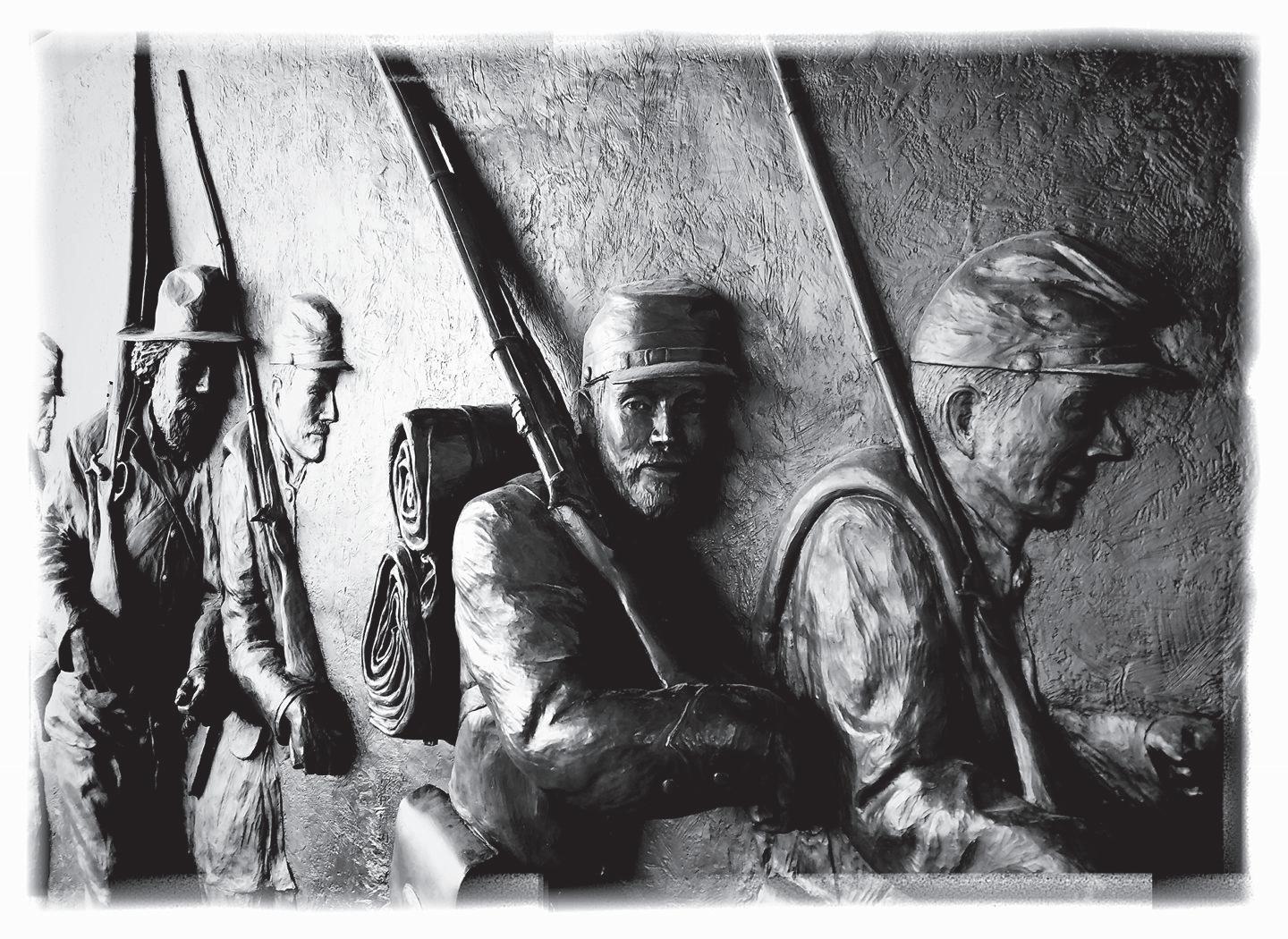
4 minute read
EVE OF GREAT ADVANCE
Ranger Tom Parson
Shiloh National Military Park
Advertisement
160 years ago, on April 28, 1862, the Union camps along the Tennessee River were bustling with activity The long awaited advance into Mississippi would begin the following day Their target; the strategic railroad crossing in the small town of Corinth.
The three armies; Army of the Tennessee, Army of the Ohio, and Army of the Mississippi, were led by Maj Gen Henry W Halleck At its height this combined “ army group” would muster over 120,000 men present for duty, the largest concentration of Union troops in the field at any time during the war They included 95 regiments of infantry, 49 batteries of artillery, and the equivalent of 8 regiments of cavalry. Not to be forgotten were somewhere between 13,000 and 15,000 horses, mules and oxen
Orders went out to individual commanders with locations each was to reach on the following day, and which roads they were to travel on Every soldier was to carry one-hundred rounds of ammunition distributed through his cartridge box, knapsack and pockets. An equal amount for each man would follow in supply wagons. Each soldier carried three days of rations in his haversack, primarily salt pork, hard tack, and coffee. This food was intended to last them through May 2.
A supply system from the river to the front was essential and the logistics to make it happen were like nothing ever attempted in the Western Hemisphere The supply line would frequently be stretched to the breaking point For every man and animal to receive his daily food ration would require over 500 tons of food per day. And this was not counting the artillery ammunition, spare parts, telegraph wire, writing paper and hundreds of other essential items needed to supply such a large force in the field
The 28-odd mile journey to Corinth, such a short distance on a map, would prove to be a monumental challenge There were not enough roads leading from one point to the other and several would have to be hacked out of the dense Tennessee and Mississippi wilderness.
Heavy spring rains fell in early May turning gentle streams into roaring rivers Military-grade bridges had to be constructed that could support supply wagons and siege artillery with cannon barrels and carriages weighing as much as 3 tons The rains turned the roads into bottomless seas of mud, requiring miles upon miles of roads to be covered with logs, one laid against the other, in a technique known as corduroying.
There was another factor which would slow the Union advance, and that was the Confederate army Two armies actually, as the Army of the West had arrived from Arkansas and swelled the Southern ranks to some 80,000 soldiers The combined force was led by Gen. Pierre G.T. Beauregard.
The Confederate armies were bitter over their defeats at Shiloh, Tennessee and Elk Horn Tavern, Arkansas and they were itching for another fight Their morale was high, and they were fairly well supplied. They did not cower behind the Corinth earthworks but planned to meet the enemy in Tennessee and make them fight for every foot of ground Everyone believed the coming Battle of Corinth would decide the war. It would begin the following day in the southeast corner of McNairy County.
The coming weeks would pass without the expected battle. The armies maneuvered and built mile upon mile of earth fortifications, many of which remain to this day. The Siege of Corinth, the largest siege ever on the American continent, would end on May 30, 1862, with the critical rail crossing falling into the hands of the Union. There would eventually be a battle, four months later, and the results would decide the fate of Corinth for the remainder of the war You can learn more by visiting the Corinth Civil War Interpretive Center, a unit of Shiloh National Military Park, at 501 West Linden Street, Corinth, MS 38834. The visitor center is open 7-days a week, from 8 am to 5 pm For more information call 662-287-9273






